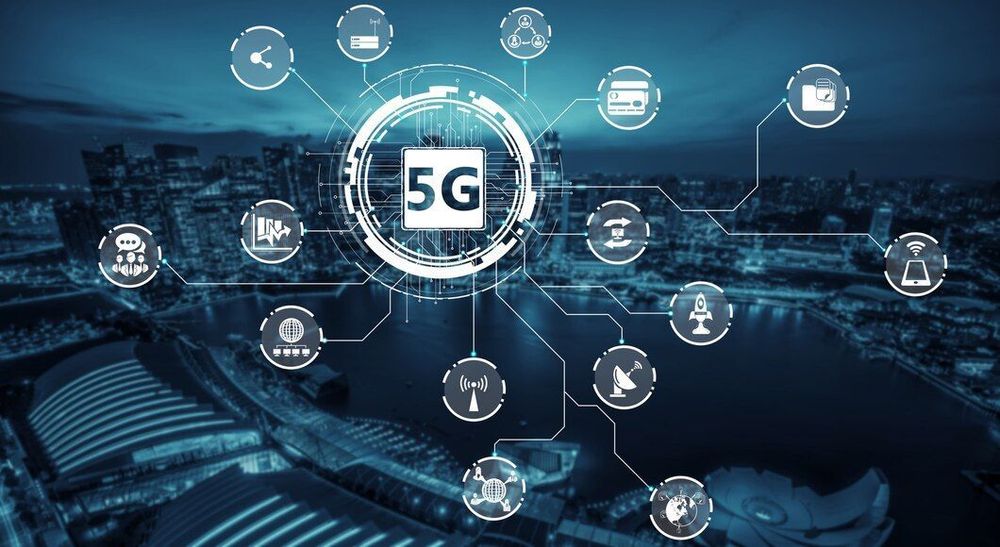How 5G Technology Is Revolutionizing Mobile Networks and Communication

The world is experiencing a digital revolution, and at the heart of it is 5G technology. As the latest generation of mobile networks, 5G promises to enhance our connectivity, transform industries, and revolutionize how we communicate. With each new mobile network generation, we’ve seen remarkable advancements in speed, coverage, and reliability and 5G is no exception. While 5G is often associated with faster download speeds, its potential goes far beyond that. In this article, we will explore how 5G is shaping the future of mobile networks and communication, from its technical innovations to its broader societal impact.
The Key Features of 5G Technology
At its core, 5G is designed to address the limitations of its predecessor, 4G, by providing faster speeds, lower latency, and greater capacity. But what does that actually mean for users and industries?
Speed: One of the most talked-about features of 5G is its incredibly fast download and upload speeds. 5G networks are expected to offer speeds up to 100 times faster than 4G, enabling users to download large files, stream high-definition video, and access online services more quickly than ever before. This speed increase will open up new possibilities for data-intensive applications, including high-quality video streaming, virtual reality (VR), and augmented reality (AR).
For example, creators and digital professionals can easily wmv to MP4 convert their video files, ensuring smooth compatibility and seamless upload times. The enhanced speeds and reliability of 5G will allow for faster processing, reducing the time it takes to convert and share media content, which is crucial for industries relying on digital media. Professionals in industries like filmmaking, advertising, and social media will benefit from the increased speed and convenience, as faster processing times will improve workflow efficiency.
Latency: Latency refers to the time it takes for data to travel from one point to another. With 5G, latency is significantly reduced, offering near-instantaneous communication between devices. This is crucial for real-time applications such as autonomous vehicles, remote surgeries, and industrial automation, where even milliseconds of delay can have significant consequences.
For autonomous vehicles, for instance, 5G will enable ultra-low latency communication between vehicles, allowing them to make quick decisions in real-time based on constantly changing environmental data. This is especially vital for ensuring safety and efficiency on the road. In healthcare, low-latency communication will enable real-time remote surgeries, allowing surgeons to operate on patients from miles away using robotic tools. These innovations would not be possible with 4G or earlier technologies.
Capacity: 5G networks are designed to handle far more devices simultaneously than 4G networks. As the number of connected devices grows, especially with the rise of the Internet of Things (IoT), 5G’s ability to manage more connections ensures that networks won’t become overcrowded. This enhanced capacity is essential for creating smart cities, connecting smart homes, and managing other IoT-based applications at scale.
With the growing demand for connected devices, 5G’s superior capacity will allow for seamless communication between billions of IoT devices, such as smart thermostats, health monitors, smart speakers, and wearables. This will lead to more efficient cities, optimized traffic systems, and smarter homes that automatically adjust to the needs of their inhabitants. The 5G network will be the backbone for the interconnected world, driving innovation in almost every industry.
The Role of 5G in Advancing Industries
While 5G will have a profound impact on consumers, its benefits extend far beyond individual use cases. Many industries are poised to undergo significant transformations as a result of 5G’s capabilities. Here are just a few examples:
Healthcare: One of the most exciting areas where 5G will have an impact is in healthcare. With lower latency and higher speeds, 5G enables real-time remote consultations, virtual health monitoring, and even remote surgeries. Doctors can perform surgeries with precision through robotic devices controlled remotely, offering life-saving treatments to patients in underserved or remote areas. Additionally, 5G will allow healthcare providers to transmit high-definition medical images and videos with ease, enabling faster diagnoses and better patient outcomes.
The improved bandwidth and speed of 5G will also enable better data sharing and collaboration between medical professionals, especially in specialized fields. For example, radiologists in one country can collaborate with surgeons in another in real-time, helping to make faster decisions and improve the quality of care. This could drastically improve healthcare outcomes, especially in rural or underserved regions that lack the infrastructure for local specialized services.
Autonomous Vehicles: Autonomous vehicles rely on real-time data from sensors, cameras, and other sources to make split-second decisions. With the low latency and high-speed communication offered by 5G, vehicles can exchange data with each other and with traffic infrastructure almost instantaneously, improving safety and efficiency. This will pave the way for a future where self-driving cars can navigate city streets, highways, and even rural roads with minimal human intervention.
Moreover, 5G will allow for the creation of smart roads that can communicate with vehicles. These roads could provide traffic data in real-time, allowing vehicles to adjust their speeds accordingly or take alternate routes. This level of connectivity will reduce traffic congestion, lower fuel consumption, and improve the overall efficiency of transportation systems worldwide.
Manufacturing and Industry 4.0: The manufacturing industry stands to benefit greatly from 5G’s capacity and speed. With more connected devices on the factory floor, 5G will enable smarter, more efficient production lines, real-time equipment monitoring, and enhanced automation. With the advent of Industry 4.0, manufacturers can create systems that not only optimize production processes but also detect faults before they occur, preventing costly downtimes.
Smart factories will use 5G to enable communication between machines, sensors, and robots, creating highly optimized and autonomous production processes. This will reduce waste, improve product quality, and lead to more efficient manufacturing. In addition, 5G’s capabilities will support predictive maintenance, where machines can alert operators about potential failures before they happen, saving companies significant repair costs.
Entertainment and Media: 5G’s ultra-fast speeds are set to transform the way we consume content. Streaming high-definition, 4K, and even 8K videos will become seamless, even on mobile devices. Live events such as concerts, sports, and performances can be streamed in real-time, with ultra-low latency, providing viewers with an immersive experience that feels almost as if they were physically present. Additionally, 5G will enable new forms of entertainment, such as cloud gaming, where users can stream high-performance games directly to their devices without the need for expensive hardware.
Gaming, in particular, will benefit from 5G’s reduced latency and high-speed data transfer. Players can engage in console-quality gaming on their mobile devices, with no need for physical consoles. As mobile gaming continues to rise, 5G’s ability to deliver rich, immersive experiences will only enhance the gaming ecosystem.
Empowering Creativity and Digital Media
5G technology isn’t just changing the way we communicate and work it’s also empowering creativity and transforming the media landscape. For instance, creatives can now upload massive video files or edit them remotely without worrying about slow connections. Whether it’s a filmmaker uploading raw footage or a designer collaborating on a project from different parts of the world, 5G will make it easier to share and create content.
Moreover, 5G will support the growing demand for virtual and augmented reality applications. As these technologies become more mainstream, 5G’s low latency and high speeds will enable real-time interactions within virtual environments. In the world of gaming, cloud gaming services will benefit from the enhanced capabilities of 5G, enabling users to stream console-quality games on their smartphones and tablets.
5G and the Future of Connectivity
As 5G technology continues to roll out across the globe, its potential for transformation is immense. Beyond faster speeds and lower latency, 5G will support the development of the next generation of connected devices. From smart homes and wearables to connected appliances and smart cities, the possibilities are virtually endless.
5G will enable a new level of interconnectedness between humans, machines, and systems, creating an ecosystem where everything can communicate in real time. This is the foundation for creating a truly smart world, where devices anticipate needs, optimize processes, and work together to improve the quality of life for individuals and communities.
However, the widespread adoption of 5G will require significant infrastructure investment, including the deployment of more cell towers and the upgrading of network systems. The rollout of 5G is expected to be gradual, with some regions receiving service sooner than others. Still, the long-term benefits of 5G will be felt across industries and by consumers, changing the way we live, work, and interact with technology.
Keep an eye for more latest news & updates on Magazine Matter!





